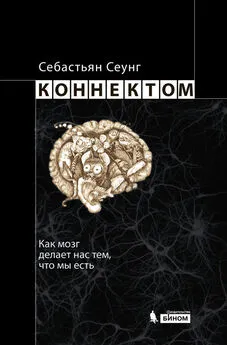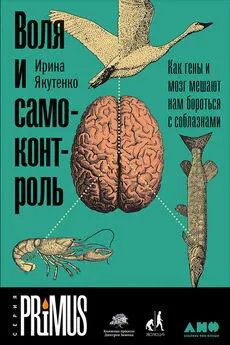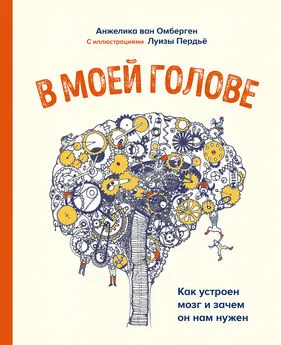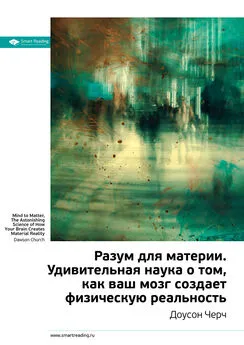Рейчел Херц - Почему мы едим то, что едим [Наука о том, как наш мозг диктует нам, что есть]
- Название:Почему мы едим то, что едим [Наука о том, как наш мозг диктует нам, что есть]
- Автор:
- Жанр:
- Издательство:Литагент 5 редакция
- Год:2021
- Город:Москва
- ISBN:978-5-04-097490-0
- Рейтинг:
- Избранное:Добавить в избранное
-
Отзывы:
-
Ваша оценка:
Рейчел Херц - Почему мы едим то, что едим [Наука о том, как наш мозг диктует нам, что есть] краткое содержание
Какие музыкальные жанры лучше всего подчеркивают вкус красного вина? Почему нам хочется калорийной пищи, когда нас постигают неудачи? Как наша личность соотносится с предпочтением сладкого или соленого?
Эта книга, словно чуткий проводник, помогает читателю уловить и распознать сенсорные, психологические и физиологические факторы, лежащие в основе пищевых привычек. С этим знанием вы сможете сделать каждый прием пищи осознанным и здоровым, а также получать только удовольствие от еды.
Почему мы едим то, что едим [Наука о том, как наш мозг диктует нам, что есть] - читать онлайн бесплатно ознакомительный отрывок
Интервал:
Закладка:
Научные открытия, о которых вы читали, – это заслуга огромного количества пищевых и сенсорных экспертов. Низкий поклон Чарльзу Спенсу и всем, кто поделился своими наработками и материалами. Я невероятно признательна моим коллегам-ученым Линде Бартошук, Гари Бошампу, Эмили Контуа, Дебре Фадул, Тимоти МакКлинтоку, Розе Макдермотт, Адаму Гопнику, Рэйчел Лаудэн, Шарлю Мишелю, Харриет Остер, Патриции Плинер, Джанет Поливи, Малте Рубачу, Эдмунду Роллсу, Диане Розенштейн, Дане Смолл, Лесли Стейн, Беверли Теппер, Майклу Тордоффу, Джордану Триоси, Хонг Ванг и Джереми Вульфу за щедрость и, конечно, Гордону Шепарду за создание нейрогастрономии и за открытый ум и сердце.
Я очень благодарна Габриелю, Сумае Партнер, друзьям и знакомым за вдохновение и удивительные истории из жизни. Спасибо людям, кто утратил способность ощущать запах, за возможность работать с вами и учиться у вас. Эта книга многое бы потеряла без помощи единомышленников и родственников, которые знакомили меня с интересными фактами и находками и помогали с написанием различных глав. Спасибо Джудит Герц, Джеми Пою, Натаниелу Герцу, Джонни МакКанну, Элизе Ван Рин, Катрин Гёцке, Стиву Мирсману – в том числе за невероятно вкусный морковный пирог – и Рону Тербарджу за беседы об осознанности и ее использовании для обуздания аппетита. Низкий поклон и уважение Мэри Карскадон за то, что посвятила меня в биологию сна и суточных ритмов и в свои пищевые исследования – и, конечно, за дружбу.
Хочу поблагодарить «вкусовых и обонятельных» товарищей Терезу Уайт, Джона Прескотта и Марту Байес за смех, мотивацию и интеллектуальное воодушевление и всех, кто поддерживал меня в период написания книги. Отдельное спасибо моей семье и самым близким друзьям: Молли за красоту души и веселую компанию, Зое за глоток новизны – ваша безграничная страсть к еде заряжала невероятной энергией; маме Джудит за то, что была моим критиком, юристом и помощником; и моему главному слушателю, единомышленнику и компаньону по еде – любимому мужу Джейми.
Примечания
1. Hayley Dixon, «Cadbury facing revolt over new Dairy Milk», The Telegraph, September 16, 2013, http://www.telegraph.co.uk/ foodanddrink/foodanddrinknews/10311826/Cadbury-facing-revolt-over-new-Dairy-Milk.html.
1. 1 I. Depoortere, «Taste receptors of the gut: Emerging roles in health and disease», Gut 63 (2014): 179–190.
2. Y. Peng et al., «Sweet and bitter taste in the brain of awake behaving animals», Nature 527 (2015): 512–515.
3. K. Hardy et al., «The importance of dietary carbohydrate in human evolution», Quarterly Review of Biology 90 (2015): 251–268.
4. A. Thier, «The Sugar Cure», Lucky Peach, October 15, 2015, http:// luckypeach.com/the-basics-of-grilling-meat-camino-oakland.
5. David Owen, «Beyond taste buds: The science of delicious», National Geographic, November 13, 2015, http://ngm.national-geographic.com/2015/12/food-science-of-taste-text.
6. Личное общение, Marina Piccioto, Professor of Psychiatry, Neuroscience and Pharmacology, Yale University, July 14, 2016.
ПРИМЕЧАНИЯ К СТР. 20–25
7. H. McGee, On Food and Cooking: The Science and Lore of the Kitchen (New York: Simon and Schuster, 2007).
8. B. Mosinger et al., «Genetic loss or pharmacological blockade of testes-expressed taste genes causes male sterility», Proceedings of the National Academy of Sciences 110 (2013): 12319-12324.
9. WNYC, «The Science Behind Obesity», September 8, 2016, http:// www.wnyc.org/story/the-science-behind-obesity.
10. Gina Kolata, «Skinny and 119 Pounds, but With the Health Hallmarks of Obesity», New York Times, July 26, 2016, http:// www.nytimes.com/2016/07/26/health/skinny-fat.html7em_ pos = small&emc = edit_hh_20160722&nl=well&nl_art = 3&n-lid=38753975&ref=headline&te=1.
11. G. Boden et al., «Excessive caloric intake acutely causes oxidative stress, GLUT4 carbonylation, and insulin resistance in healthy men», Science Translational Medicine 7 (September 9, 2015): 304re7.
12. K. Keskitalo et al., «Sweet taste preferences are partly genetically determined: Identification of a trait locus on chromosome 16», American Journal of Clinical Nutrition 86 (2007): 55–63.
13. L. D. Hwang et al., «A common genetic influence on human intensity ratings of sugars and high-potency sweeteners», Twin Research and Human Genetics 18 (2015): 361–367.
14. P. V. Joseph, D. R. Reed, and J. A. Mennella, «Individual differences among children in sucrose detection thresholds: relationship with age, gender, and bitter taste genotype», Nursing Research 65 (2016): 3-12.
15. J. A. Mennella et al., «Preferences for salty and sweet tastes are elevated and related to each other during childhood», PLoS ONE 9 (2014): e92201.
16. Keskitalo, «Sweet taste preferences».
17. A. Drewnowski, «Taste preferences and food intake,» Annual Review of Nutrition 17 (1997): 237–253.
18. G. E. Kaufman et al., «An evaluation of the effects of sucrose on neonatal pain with 2 commonly used circumcision methods», American Journal of Obstetrics and Gynecology 186 (2002): 564–568.
19. Там же.
20. «The Bris Ceremony», Kveller, http://www.kveller.com/article/ the-bris-ceremony.
ПРИМЕЧАНИЯ К СТР. 25–28
21. J. A. Mennella, «The flavor world of childhood», Frontiers in Integrative Neuroscience «Science of Human Flavor Perception», стенография конференции, отрывок, 2015.
22. M. D. Lewkowski et al., «Sweet taste and blood pressure-related analgesia», Pain 106 (2003): 181–186.
23. T. Kakeda et al., «Sweet taste-induced analgesia: an fMRI study», Neuroreport 21 (2010): 427–431.
24. A. B. Kampov-Polevoy et al., «Sweet preference predicts mood altering effect of and impaired control over eating sweet foods», Eating Behaviors 7 (2006): 181–187.
25. B. P. Meier et al., «Sweet taste preferences and experiences predict prosocial inferences, personalities, and behaviors», Journal of Personality and Social Psychology 102 (2012): 163–174.
26. M. Al’absi et al., «Exposure to acute stress is associated with attenuated sweet taste», Psychophysiology 49 (2012): 96-103.
27. «Testing the Acidity of Vinegar», Cultures for Health, http:// www.culturesforhealth.com/learn/kombucha/testing-acid-ity-strength-vinegar; «Approximate pH of Foods and Food Products», FDA/Center for Food Safety and Applied Nutrition, updated (последнее обновление) September 9, 2008, http:// www.vldhealth.org/pdf/environmentalPDF/foodPH2007.pdf.
28. Robert Perkins, «Why is that so sour? New mechanism for tasting discovered», USC News, December 23, 2015, http://news.usc. edu/90235/why-is-that-so-sour-new-mechanism-for-tasting-dis-covered; W. Ye et al., «The K+ channel KIR2.1 functions in tandem with proton influx to mediate sour taste transduction», Proceedings of the National Academy of Sciences 113 (2016): E229-238.
29. Jesus Diaz, «Sour Candy Is Almost As Bad For
Your Teeth As Battery Acid», Gizmodo, November
17, 2011, http://gizmodo.com/5860593/
sour-candy-is-almost-as-bad-for-your-teeth-as-battery-acid.
30. R. Wrangham, «Flavor in the context of ancestral human di-ets», Frontiers in Integrative Neuroscience «Science of Human Flavor Perception», стенография конференции, отрывок, 2015.
31. M. Nakagawa, K. Mizuma, and T. Inui, «Changes in taste perception following mental or physical stress», Chemical Senses 21 (1996): 195–200.
ПРИМЕЧАНИЯ К СТР. 29–35
32. C. Noel and R. Dando, «The effect of emotional state on taste perception», Appetite 95 (2015): 89–95.
33. Nakagawa, Mizuma, and Inui, «Changes in taste perception».
34. T. P. Heath et al., «Human taste thresholds are modulated by serotonin and noradrenaline», Journal of Neuroscience 26 (2006): 12664-12671.
35. M. Bertino, G. K. Beauchamp, and K. Engelman, «Long-term reduction in dietary sodium alters the taste of salt», American Journal of Clinical Nutrition 36 (1982): 1134–1144.
36. M. Bertino, G. K. Beauchamp, and K. Engelman, «Increasing dietary salt alters salt taste preference», Physiology and Behavior 38 (1986): 203–213.
37. S. R. Crystal and I. L. Bernstein, «Infant salt preference and mother’s morning sickness», Appetite 30 (1998): 297–307.
38. S. R. Crystal and I. L. Bernstein, «Morning sickness: Impact on offspring salt preference», Appetite 25 (1995): 231–240.
39. L. J. Stein et al., «Increased liking for salty foods in adolescents exposed during infancy to a chloride-deficient feeding formula», Appetite 27 (1996): 65–77.
40. M. Leshem, «Salt preference in adolescence is predicted by common prenatal and infantile mineral-fluid loss», Physiology and Behavior 63 (1998): 699–704.
41. M. O’Donnell et al., «Urinary sodium and potassium excretion, mortality, and cardiovascular events», New England Journal of Medicine 371 (2014): 612–623.
42. A. Mente et al., «Associations of urinary sodium excretion with cardiovascular events in individuals with and without hypertension: A pooled analysis of data from four studies», The Lancet 388 (2016): 465–475.
43. Steven Reinberg, «Americans Still Eat Too Much Salt: CDC», Health-Day, http://consumer.healthday.com/public-health-informa-tion-30/centers-for-disease-control-news-120/americans-still-eat-too-much-salt-cdc-683236.html.
44. R. Herz, That’s Disgusting: Unraveling the Mysteries of Repulsion (New York: W. W. Norton, 2012).
45. G. Bell, and H-J. Song, «Genetic basis for 6-n-propylthioura-cil taster and supertaster status determined across cultures,» in J. Prescott and B. J. Tepper, eds., Genetic Variation in Taste Sensitivity (New York: Marcel Dekker, 2004).
Читать дальшеИнтервал:
Закладка:
![Обложка книги Рейчел Херц - Почему мы едим то, что едим [Наука о том, как наш мозг диктует нам, что есть]](/books/1061252/rejchel-herc-pochemu-my-edim-to-chto-edim-nauka-o-t.webp)









